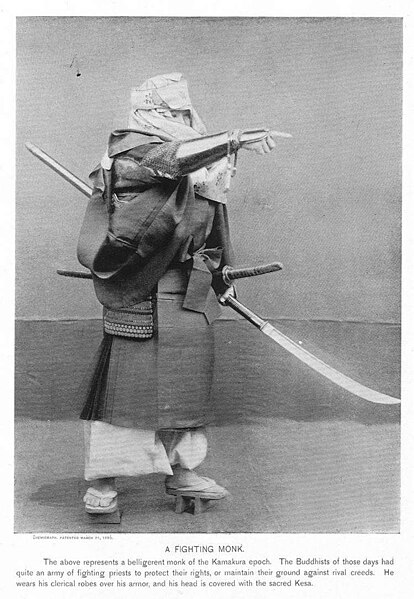Saitō Musashibō Benkei , popularly known by the mononym Benkei, was a Japanese warrior monk (sōhei) who lived in the latter years of the Heian Period (794–1185). Benkei led a varied life, first becoming a monk, then a mountain ascetic, and then a rogue warrior. He later came to respect and serve the famous warrior Minamoto no Yoshitsune, also known as Ushiwakamaru. He is commonly depicted as a man of great strength and loyalty, and a popular subject of Japanese folklore showcased in many ancient and modern literature and productions.
Benkei by Kikuchi Yōsai
Utagawa Kuniyoshi, Yoshitsune and Benkei defending themselves in their boat during a storm created by the ghosts of conquered Taira warriors
Benkei and Yoshitsune
The moonlight fight between Yoshitsune and Benkei. Gojo Bridge, Kyoto
Sōhei were Buddhist warrior monks of both classical and feudal Japan. At certain points in history, they held considerable power, obliging the imperial and military governments to collaborate.
The sōhei Benkei with Minamoto no Yoshitsune
Oda Nobunaga forces setting fire to Enryaku-ji and massacring the monks in the 1571 Siege of Mount Hiei (depiction in the Ehon taikōki)
Sōhei weapons and dress during the Kamakura period






